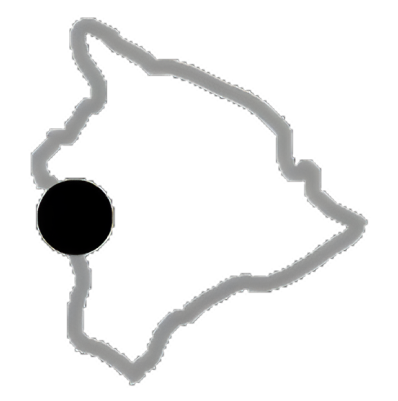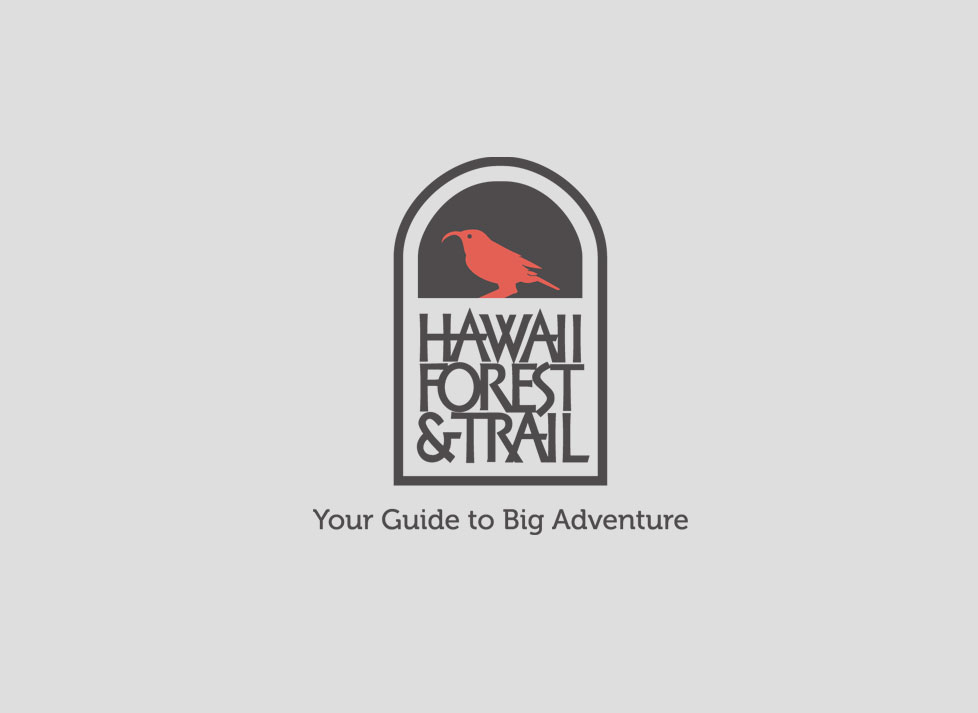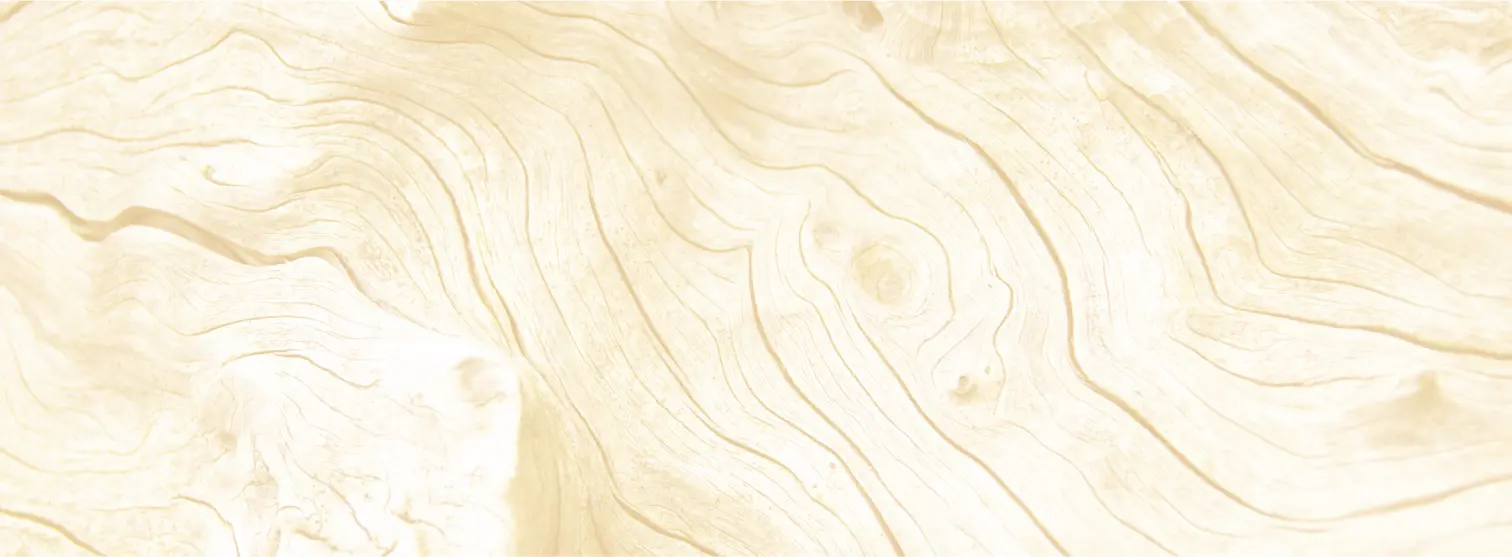rugged and hostile dry lowlands, incredible pit craters, surreal eruptive vents, awesome lava tubes, stark cinder highlands, an astonishing collection of archeological sites, thousands of acres of remote inaccessible backcountry, and of course, the future threat of an eruption and lava flow. It’s got it all within a relatively compact area.
Aerial view of Hualalai summit craters Photo by USGS
One of many lava tubes on Hualalai Photo by Rob Pacheco
When I first arrived in Hawaii, I read some real estate sales literature that said, “Kailua-Kona situated on the extinct volcano Hualalai.” Real estate agents like that; geologists laugh at it. Hualalai last erupted in 1801. The lava at the airport and Mahaiula, or the Kona Coast State Park, is that flow. It destroyed a breadfruit grove and fishpond of Kamehameha, and numerous fishing villages. The vent is a mere 800 feet up in elevation on the west rift zone of the mountain and is a spectacular formation. Located on what was once the Huehue Ranch, the vent Puhi a Pele (lit. blown out by Pele) is over a hundred feet high and a couple hundred yards long. As lava fountained up and came back down, it built up this spatter rampart. The mouth of the vent looks like stretched, hot, rusty taffy all gooped on itself. Straight down at the throat is a 20 foot wide hole 80 feet deep. Standing there it is easy to visualize the eruption shooting material high into the air. As your eye follows the flow down to the coast, the hard cool lava appears to still be in motion. Puhi a Pele is a powerful place and just one of numerous “hot spots” on Hualalai.
Hiking on Hualalai Photo by Rob Pacheco
Dense native mesic forest on the Waha Pele flow Photo by Rob Pacheco
Another amazing feature of the volcano is the Puu WaaWaa / Puu Anahulu eruption. Easily two of the most dramatic landforms on the islands, it is hard to believe the geologists description of this event. 100,000 years ago or so, Hualalai erupted on its poorly developed north rift zone. High gas content led to fountaining that built the Puu WaaWaa cinder/pumice cone. This cone, which dominates the mauka view of north Kona, has deeply eroded gulches that radiate around the structure, hence, Puu WaaWaa or many furrowed hill. It is one of the few places in the islands which has decent obsidian. After the initial fountaining, a very viscous trachyte flow was pushed out of the vent with incredible force. Though only a few miles long, the lava flow has one of the largest volumes of any single hawaiian flow. The rounded hills straight up from Kiholo bay are the terminus of this flow named Puu Anahulu. The flow itself is an amazing 900 feet thick. You drive across the top of the flow on Mamalahoa Highway where the S curve heads up the embankment near the Puu Lani subdivision. Other flows from Hualalai and Mauna Loa have yet to completely cover this humongous and ancient eruption.
Puu Waa Waa trachyte pumice cone Photo by Rob Pacheco
The last time Hualalai erupted to the south was the 750 year old Waha Pele flow. This flow, originating nearly 5500 feet up the mountain, makes its way down to the ocean at Keauhou. It’s a beautiful lesson in the relationship of rainfall to plant colonization on lava flows. Near the vent in the dry subalpine, the flow is colonized sparsely with lichens, small ohia, and other colonizing plants. As you make your way down the flow and into greater average annual rainfall, the plants get more numerous and large. At around 3000 foot level the lava flow now has an incredibly dense mesic forest with ohia trees 80 feet high and hapuu tree ferns 20 plus feet tall. Finally, near the dry coastal area at the end of Alii Drive, the flow is absent enough of plants so that you can see the stacked aa clinker that covers the buried warriors killed in the kapu war of 1819.
Hualalai also harbors one of the deepest dry pit craters on earth. Recently named Na One, this crater was measured in 1995 at a depth of over 900 feet. It has a lava drapery which formed as the lava which flowed out over the edge drained back into the vent. Old decrepit ohia trees cling precariously to the bare rock ledge. From the spillover ledge majestic views of distant Mauna Kea and Mauna Loa are possible. The faint humps of the mysterious Ahua Umi heiau softly dot the saddle area between Hualalai and Mauna Loa. Here the visitor experiences remoteness and solitude which most would never imagine possible in Hawaii.
From my home I awaken each morning with a view of Hualalai’s summit. It’s a view I cherish more than our coastal panorama. When driving Queen K, I always look up the west rift zone towards Huehue, the pimply ranch. And in the afternoon light, Puhi a Pele shows all her fabulous definition. This volcano is alive and vibrant. Despite the real estate literature, Hualalai will one day erupt again. And as lava flows down to sea, it won’t find breadfruit plantations, fishponds, or fishing villages as before, but it will have no problem finding real estate in the thickly populated area of North Kona.


